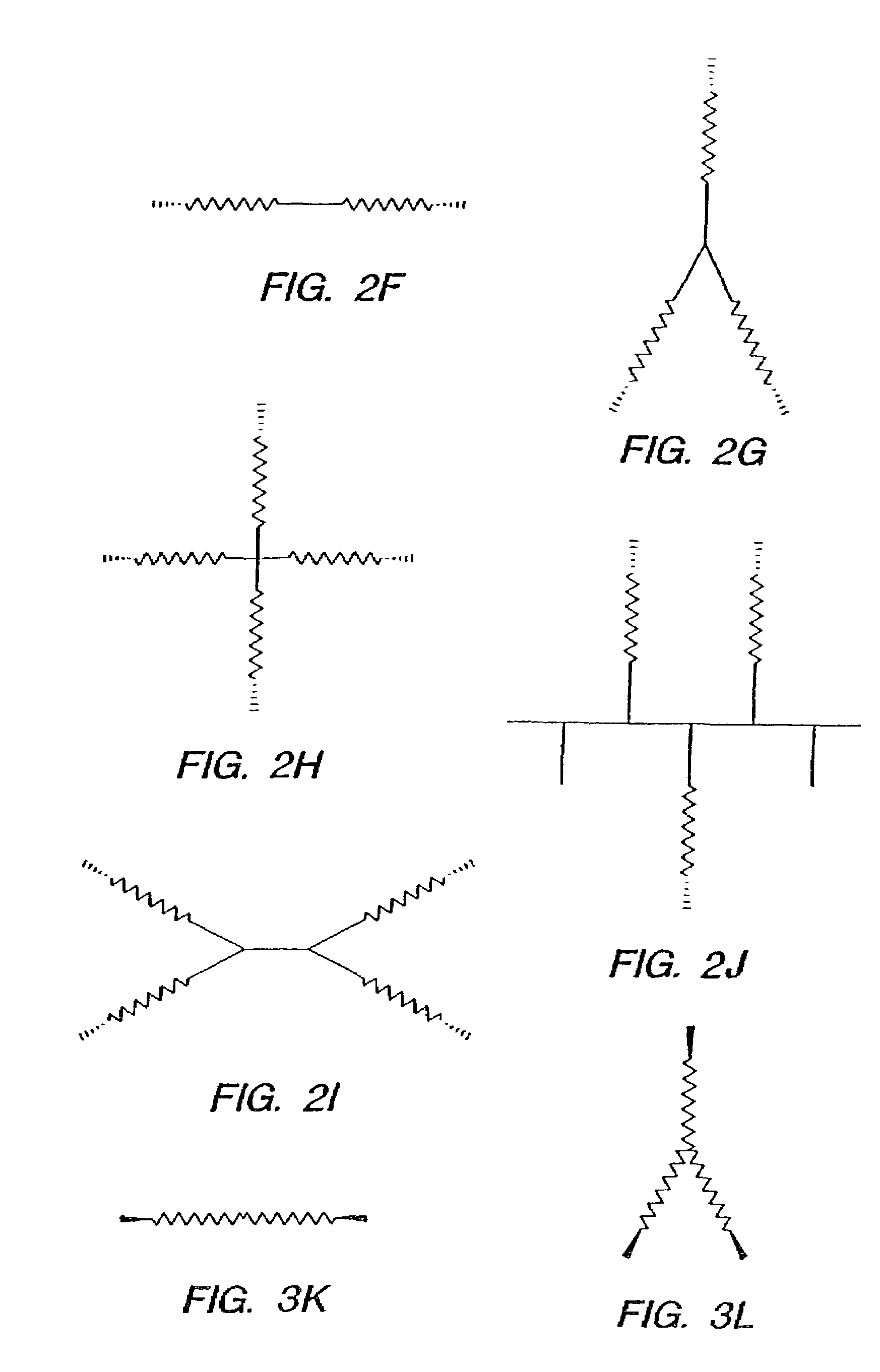Adhesion barriers applicable by minimally invasive surgery and methods of use thereof
a technology of adhesion barriers and minimally invasive surgery, applied in the field of biocompatible crosslinked polymers, can solve the problems of scar-like masses and frequent painful adhesions
- Summary
- Abstract
- Description
- Claims
- Application Information
AI Technical Summary
Benefits of technology
Problems solved by technology
Method used
Image
Examples
example 1
Synthesis of a Water-soluble Difunctional, Biodegradable Functional Polymer Based on Polyalkylene Oxide Block Copolymer
[0195]First, Polyethylene glycol-co-polycaprolactone polyol (“F68C2”) was synthesized as follows:
[0196]30 g of Pluronic F68 was dried under vacuum at 110° C. for 6 h and then mixed with 1.710 g of caprolactone and 30 mg of stannous 2-ethylhexanoate in a glass sealing tube. The glass tube then was sealed under nitrogen atmosphere and heated to 170° C. and maintained at this temperature for 16 h. The Pluronic F68-caprolactone polymer was cooled and recovered by breaking the glass sealing tube, and then further purified by several precipitations from a toluene-hexane solvent-nonsolvent system.
[0197]The polymer then was dried in vacuum at 40° C. and used immediately in the activation reaction described below:
[0198]Reaction with succinic anhydride (“11F68C2S”):
[0199]30 g of Pluronic F68-caprolactone copolymer was dissolved in 200 ml dry N,N-dimethyl formamide (“DMF”) and...
example 2
Amine Terminated Synthetic Biodegradable Crosslinkable Polymer
[0203]Reaction of F68TMC2SSNHS with Lysine.
[0204]3.55 g of lysine was dissolved in 200 ml 0.1M borate buffer (pH 8.5). The mixture was cooled to 0° C. in ice bath and 10 g of F68C2SSNHS were added to the mixture. The mixture was stirred for 6 h at room temperature and lyophilized. The lyophilized powder was dissolved in 30 ml toluene and filtered. The filtrate was added to 4000 ml cold diethyl ether. The precipitated amine terminated polymer was recovered by filtration and dried under vacuum. The polymer was stored under argon at −20° C.
example 3
Synthesis of Carboxyl Terminated Oligolactic Acid Polymer Activated with N-hydroxysulfosuccinimide
[0205]Synthesis of difunctional oligolactate with terminal carboxyl acid end-groups activated with N-hydroxysulfosuccinimide groups.
[0206]Part 1: Synthesis of Oligomeric poly(lactic acid) with Terminal Carboxyl Acid Groups (“PLA-S”).
[0207]In a 250 ml 3 neck flask equipped with mechanical stirrer, nitrogen inlet and distillation condenser, 2 grams of succinic acid and 34.1 ml 1N HC 1 and 3.83 g L-lactic acid, sodium salt were charged. The flask was then immersed in a silicone oil bath maintained at 150° C. Most of the water from the reaction mixture was removed over period of 5 hours by distillation. The remaining water was removed by heating the reaction mixture under vacuum at 180° C. for 15 h. The reaction mixture was cooled and lyophilized at 0° C. to remove traces of water. The product was isolated by dissolving in toluene and precipitating in hexane. The precipitated polymer was is...
PUM
| Property | Measurement | Unit |
|---|---|---|
| Fraction | aaaaa | aaaaa |
| Time | aaaaa | aaaaa |
| Time | aaaaa | aaaaa |
Abstract
Description
Claims
Application Information
 Login to View More
Login to View More - R&D
- Intellectual Property
- Life Sciences
- Materials
- Tech Scout
- Unparalleled Data Quality
- Higher Quality Content
- 60% Fewer Hallucinations
Browse by: Latest US Patents, China's latest patents, Technical Efficacy Thesaurus, Application Domain, Technology Topic, Popular Technical Reports.
© 2025 PatSnap. All rights reserved.Legal|Privacy policy|Modern Slavery Act Transparency Statement|Sitemap|About US| Contact US: help@patsnap.com



